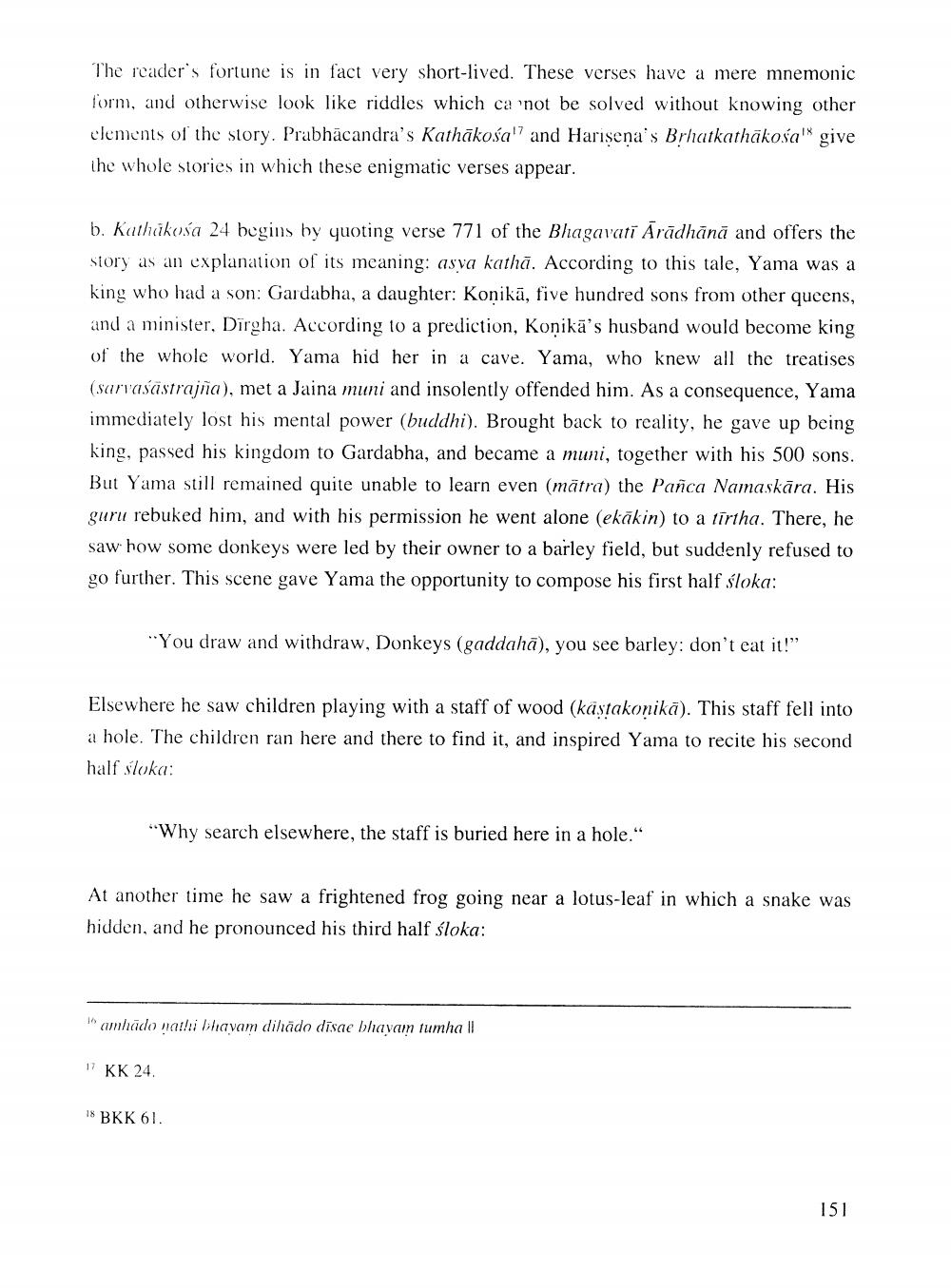________________
The reader's fortune is in fact very short-lived. These verses have a mere mnemonic form, and otherwise look like riddles which ca 'not be solved without knowing other elements of the story. Prabhācandra's Kathākośa' and Harisena's Brhatkathākośal give the whole stories in which these enigmatic verses appear.
b. Kathakośa 24 begins by quoting verse 771 of the Bhagavati Ārādhānā and offers the story as an explanation of its meaning: asva kathā. According to this tale, Yama was a king who had a son: Gardabha, a daughter: Konikā, five hundred sons from other queens, and a minister, Dīrgha. According to a prediction, Konikā's husband would become king of the whole world. Yama hid her in a cave. Yama, who knew all the treatises (sarvasõstrajna), met a Jaina muni and insolently offended him. As a consequence, Yama immediately lost his mental power (buddhi). Brought back to reality, he gave up being king, passed his kingdom to Gardabha, and became a muni, together with his 500 sons. But Yama still remained quite unable to learn even (mätra) the Pañca Namaskāra. His guru rebuked him, and with his permission he went alone (ekākin) to a tirtha. There, he saw how some donkeys were led by their owner to a barley field, but suddenly refused to go further. This scene gave Yama the opportunity to compose his first half śloka:
“You draw and withdraw, Donkeys (gaddaha), you see barley: don't eat it!"
Elsewhere he saw children playing with a staff of wood (kastakonikā). This staff fell into a hole. The children ran here and there to find it, and inspired Yama to recite his second half sloka:
"Why search elsewhere, the staff is buried here in a hole."
At another time he saw a frightened frog going near a lotus-leaf in which a snake was hidden, and he pronounced his third half śloka:
"amhädo nathi bhavam dihãdo disae bhayam tumha II
1 KK 24.
18 BKK 61.
151




